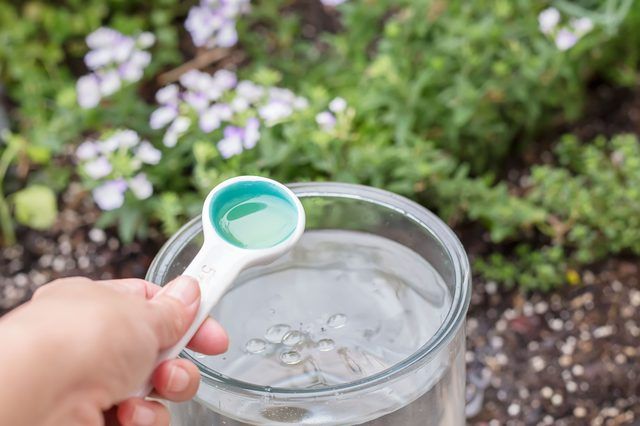Bulbs
Flower Basics
Flower Beds & Specialty Gardens
Flower Garden
Garden Furniture
Garden Gnomes
Garden Seeds
Garden Sheds
Garden Statues
Garden Tools & Supplies
Gardening Basics
Green & Organic
Groundcovers & Vines
Growing Annuals
Growing Basil
Growing Beans
Growing Berries
Growing Blueberries
Growing Cactus
Growing Corn
Growing Cotton
Growing Edibles
Growing Flowers
Growing Garlic
Growing Grapes
Growing Grass
Growing Herbs
Growing Jasmine
Growing Mint
Growing Mushrooms
Orchids
Growing Peanuts
Growing Perennials
Growing Plants
Growing Rosemary
Growing Roses
Growing Strawberries
Growing Sunflowers
Growing Thyme
Growing Tomatoes
Growing Tulips
Growing Vegetables
Herb Basics
Herb Garden
Indoor Growing
Landscaping Basics
Landscaping Patios
Landscaping Plants
Landscaping Shrubs
Landscaping Trees
Landscaping Walks & Pathways
Lawn Basics
Lawn Maintenance
Lawn Mowers
Lawn Ornaments
Lawn Planting
Lawn Tools
Outdoor Growing
Overall Landscape Planning
Pests, Weeds & Problems
Plant Basics
Rock Garden
Rose Garden
Shrubs
Soil
Specialty Gardens
Trees
Vegetable Garden
Yard Maintenance
How to Care for Verbena Flowers
How to Care for Verbena Flowers. Sun-loving verbena (Verbena x hybrida), a butterfly favorite, is sometimes described as a see-through plant, because its long flowering stems do not obstruct the view of other bedding plants and flowers. Depending upon the variety, verbena grows in U.S. Department of Agriculture plant hardiness zones 7 through 10 as...
Sun-loving verbena (Verbena x hybrida), a butterfly favorite, is sometimes described as a see-through plant, because its long flowering stems do not obstruct the view of other bedding plants and flowers. Depending upon the variety, verbena grows in U.S. Department of Agriculture plant hardiness zones 7 through 10 as a perennial, and in USDA zones 6 and below as a tender annual outdoors or in containers. Verbena does best in a sunny and well-drained spot. Considered a low-maintenance plant, it generally requires little care beyond the basics.
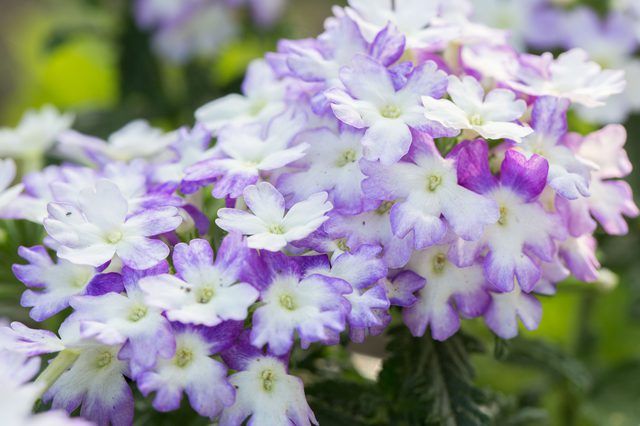
Things You'll Need
Pruning shears
All-purpose fertilizer
Garden cultivator or hoe
Trowel
Dish soap
Spray bottle
Neem oil
Rags or paper towels
Isopropyl alcohol
Step 1
Trim all plants surrounding your verbenas if necessary to allow them to receive eight to 10 hours of full sun daily. Too little sun can limit flowering and make plants susceptible to powdery mildew. Move potted plants as needed to maximize the amount of sun they get each day.
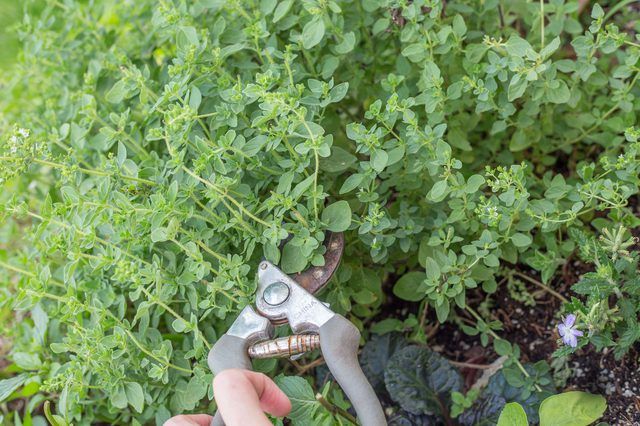
Step 2
Remove surrounding plants so each verbena has 1 1/2 to 3 feet of space surrounding it. Trim the lateral or side growth on nearby plants or remove them entirely if they are crowding out the verbenas. Good airflow around verbenas helps prevent disease.
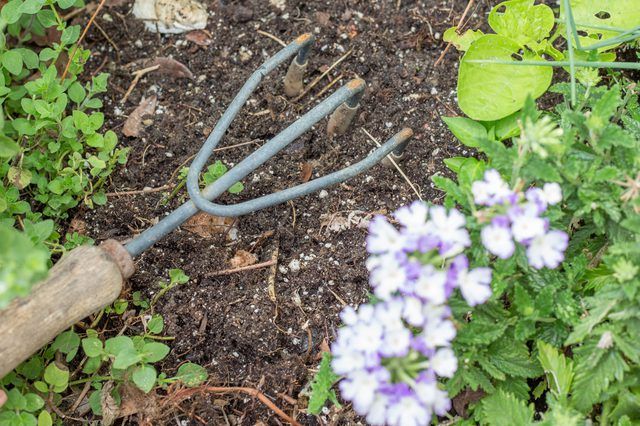
Step 3
Apply 1 inch of water at least once a week or whenever the soil appears dry, but not to the point of saturation. Water the plants at soil level and not from overhead, digging into the soil to a depth of 6 inches to check for moisture and watering until the soil is damp to that depth. Check the soil moisture about once a week during average weather and every other day during hot, dry weather.
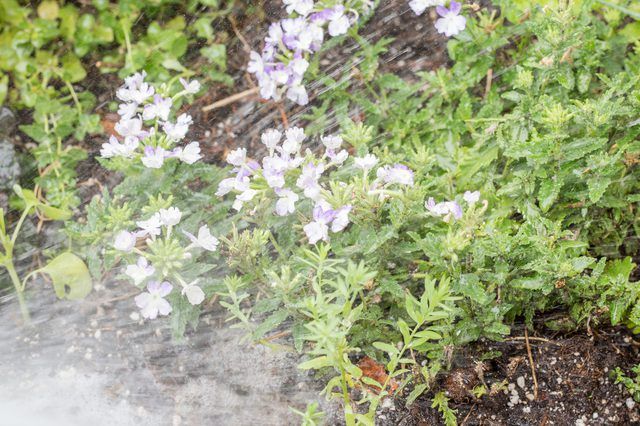
Step 4
Pinch or snip off dead flowers on verbena plants regularly to encourage more blooming.
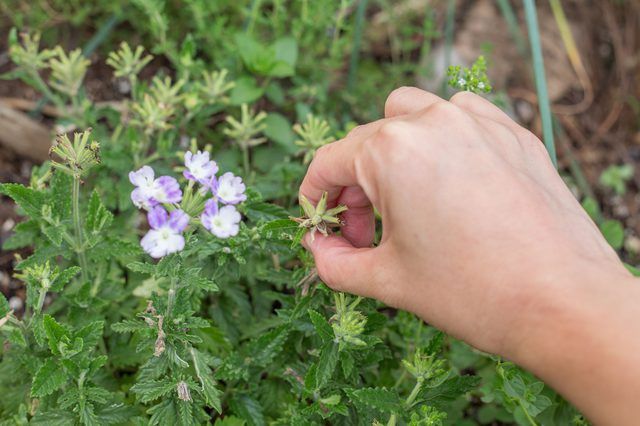
Step 5
Prune the plants back two or three times during the growing season by about one-fourth of their height and spread or whenever blooming slows. This helps encourage more flowers.
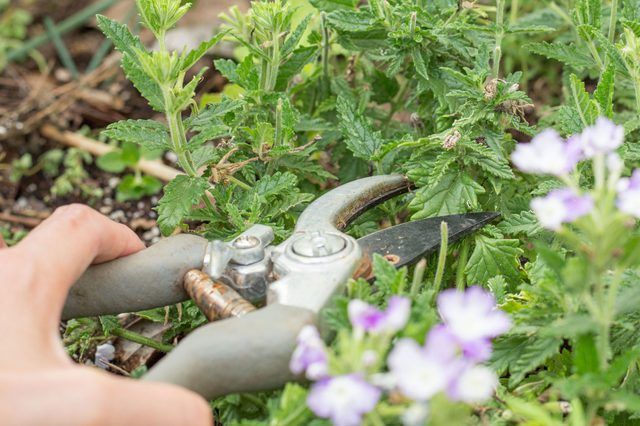
Step 6
Spread a complete slow-release fertilizer, such as 19-5-9 or 16-4-8, at least once a month during the growing season at a rate of 1 pound per 100 square feet of garden.
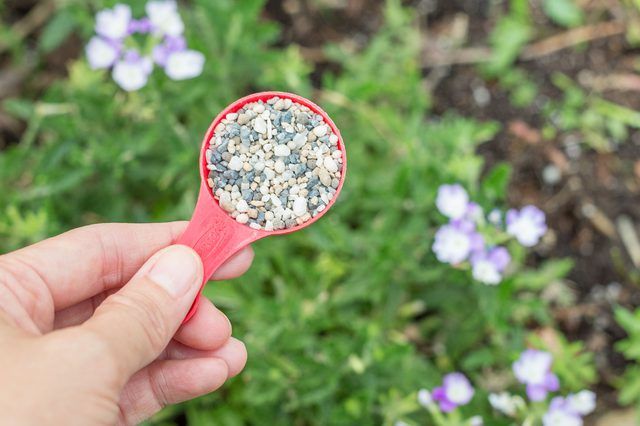
Step 7
Inspect your verbenas regularly for signs and symptoms of pests, such as the pests themselves, discolored or distorted leaves, holes or chewed edges in flowers or foliage, trails in leaves and the sticky honeydew produced by aphids. Check for powdery mildew, which appears as a white, downy substance on leaves and along stems.
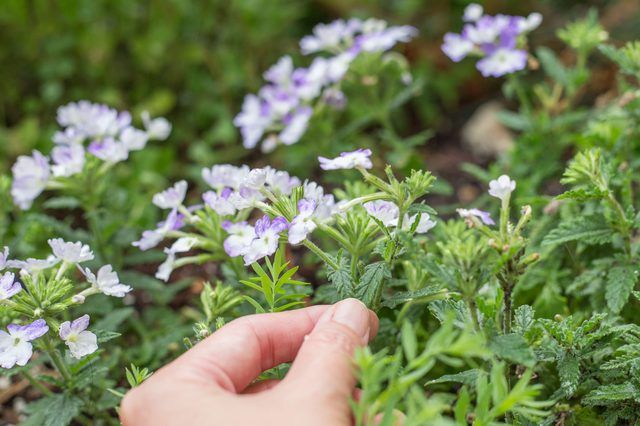
Step 8
Treat plants infested with spider mites, aphids and thrips by rinsing the leaves with a strong spray of water or spraying with homemade insecticidal soap made by mixing 2 teaspoons of dish detergent with 1 quart of water in a spray bottle. Spray the plant until the solution runs from the leaves.
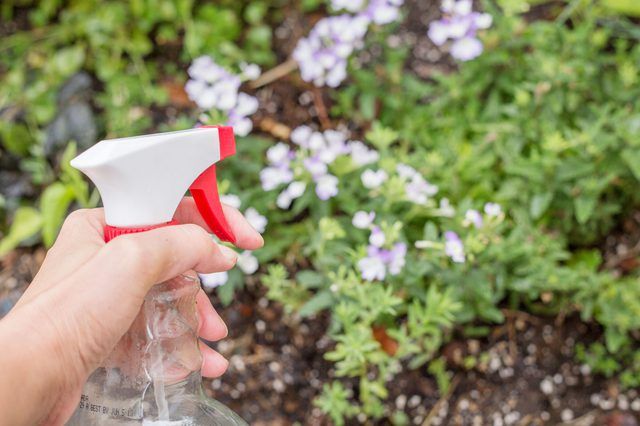
Step 9
Dilute 2 teaspoons of neem oil in 1 gallon of water and spray the solution on the entire plant if the verbena has powdery mildew or a difficult-to-treat pest infestation. Wear gloves, long sleeves, long pants and protective eyewear when working with neem oil because it can irritate the skin or damage your eyes.
